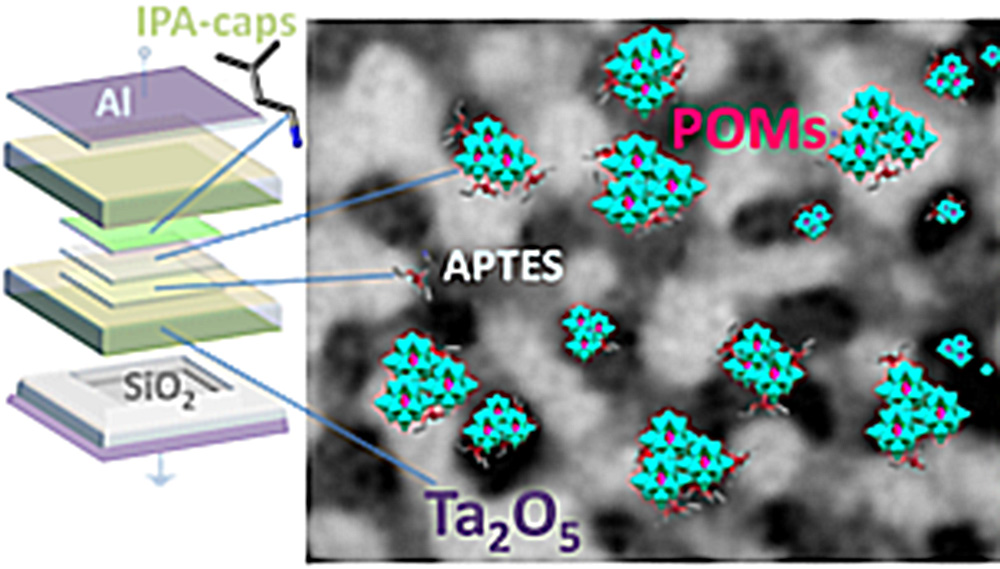Molecular memory cells based on tungsten polyoxometalates and high-k dielectrics
Polyoxometalates are complex inorganic anions that may be considered as the molecular analog of transition metals oxides. In this application we developed a hybrid molecular/semiconductor capacitor type memory cell based on the redox properties of a Keggin type Tungsten polyoxometalate. The molecular layer is the charging part of the structure. A thin silicon bottom oxide is for the control of the cell (write/erase operations) and a high-k tantalum oxide serves as a gate. The performance of the cell depends on the quality of the gate oxide. The resulting non-volatile memories are the first documented CMOS-compatible long-term-retention molecular capacitive cell of its kind, implementing inherent structure-emerging heat management. Great potential emerges for numerous energy-inspired innovations, enabling functional oxide-molecular hybrids exploitation as high-end non-volatile memory products.

- Balliou, A. et al. Size-dependent single electron transfer and semi-metal-to-insulator transitions in molecular metal oxide electronics. Nanotechnology 29, (2018).
- Balliou, A. et al. Low-Dimensional Polyoxometalate Molecules/Tantalum Oxide Hybrids for Non-Volatile Capacitive Memories. ACS Appl. Mater. Interfaces 8, (2016).